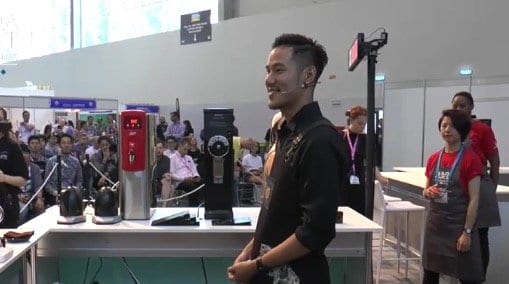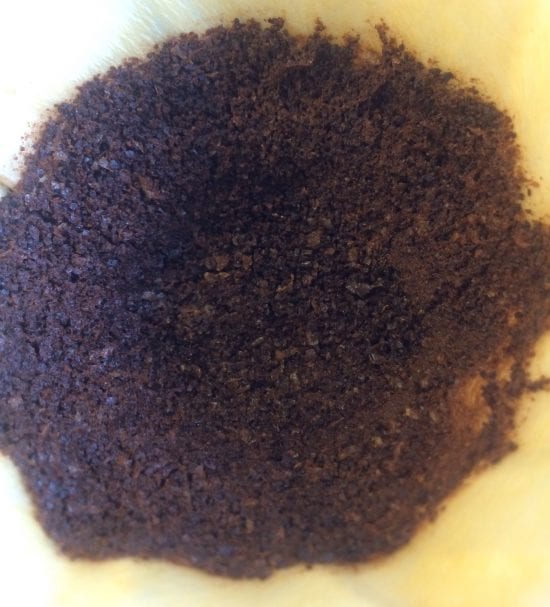
We re-create World Brewers Champion Chad Wang’s winning recipe—with a few tweaks and experiments along the way—and give you the steps to try it at home!
SPECIAL TO BARISTA MAGAZINE
Chad Wang of Taiwan won it all at the World Brewers Cup this year with a quick and simple recipe. I interviewed him last week about his victory, and I highly suggest taking a few minutes to watch his routine here.
Since Chad’s method was so different from most pourover recipes, it does not work well with any and every type of coffee. According to Chad, “This recipe is suitable for a light, well-roasted coffee. I would change the brew ratio and grind size according to the roast level. The rule of thumb for me: the darker the roast, the smaller the ratio and coarser the grind. When the ratio gets too small and too concentrated, I add water after brewing.”
Chad’s overall strategy for dealing with roast level certainly deserves exploration. However, for this particular exercise we will be working with Chad’s winning recipe, so I would suggest grabbing your best bag of lightly roasted coffee. Got it? Let’s brew!

THE RECIPE
- Heat a full kettle of water to 200 degrees Fahrenheit (93 degrees Celsius)
- Place a white paper filter into a ceramic Hario V60 and rinse it thoroughly
- Grind coffee very finely
- If possible, sift your coffee so that majority of it is 400um
- Place 15g ground and coffee into the V60 and make sure it is level
- Start timer and spiral pour 30g water
- At :30 CENTER POUR up to 250g water in 40-45s
- At 2:00-2:15, drawdown should be complete
The first thing I noticed when I finished brewing this way for the first time was how concave my brew bed was. Once the water disappeared, I couldn’t help but wonder if I should even drink the coffee. I mean, it looked bad. Like, Sarlacc Pit bad. But one of the wonderful things about brew experiments is that they force us to challenge our assumptions and question our certainties. So I drank the coffee. And it was good.

When I asked Chad if I was doing it right, he told me that his coffee packs were also concave when he was done brewing. “With my technique, fine grinds flow to the top, and through the dripping process, coffee sticks to the wall, which results in different extraction rates. Under-extraction of the top is inevitable, and desirable as it contributes to the acidity. The key is not to over-extract the bottom of the cone. This results in a sophisticated beverage, especially as temperature cools.”
THE EXPERIMENT: CENTER VS SPIRAL
In order to explore all the effects of Chad’s choice, I decided to brew again, doing everything exactly the same, except with a spiral pour.
One notable difference in the brewing itself is that the drawdown time increased significantly. With the center pour, I was able to accomplish the 2:00 brew time. This was stretched to 3:30 simply by spiral pouring! This lengthened brew time had effects on the cup qualities and flavors, as did the increased turbulence caused by the movement of the water.

I don’t want to give too much away, lest you just decide to take my word for it and not try this experiment yourself. However, I will say that I found both cups to be pleasant but in very different ways. So please do try this for yourself with a few different coffees and see what you taste. The results may surprise you.
Perhaps we have feared the Sarlacc Pit for too long.
 ABOUT THE AUTHOR
ABOUT THE AUTHOR
Joshua Dusk-Peebles works as a technician and educator for Counter Culture Coffee in Chicago. He loves exploring, experimenting, learning, and sharing what he has discovered with others. Before falling into the world of coffee, he spent time working as a diesel mechanic, an itinerant preacher, a bike messenger, and a vegan cook. Nothing makes him happier than an outdoor adventure with his family. He can be reached at dusk.peebles@yahoo.com or found online at duskcoffee.com.


Hello, I am trying this technic, it’s very interresting, not very good for the moment, but very different. Do you know what grind size (the number) it is with the EK43 ?
Thanks, Regards. 😉